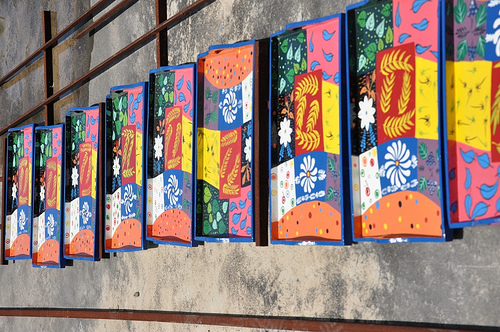Why Is It So Hard To Help Haiti?
With thousands of non-profit organizations raising billions of dollars to assist the people of Haiti, plus a billion set aside in the budget from the United States and $6 billion more from the United Nations, Haiti continues on a downward spiral with its latest catastrophe: a cholera epidemic.
It is estimated that the cholera epidemic in Haiti will last for a number of years because of the 1.5 million people that are still displaced from the January 2010 earthquake.
With over 10% of Haiti’s population living in “temporary” housing facilities, conditions are a breeding ground for cholera and a multitude of other bacteria. Meant as temporary housing that is nearing its one year anniversary, the Haitian people continue to sleep under tarps and share temporary latrines with tens of thousands of people.
An Unavoidable Epidemic
It should come as no surprise that the Centers for Disease Control found that cholera has spread much faster than expected. In the 30 days since detected, there have been 70,000 reported cases of cholera with over 1600 reported deaths.
Under normal conditions, cholera is easily treated with antibiotics and maintaining hydration. Without proper medical care, death can occur within hours due to dehydration, which is exactly what is happening to the people of Haiti.
Not only is cholera easily treated, but with basic, preventive measures that revolve around using safe water for drinking, washing hands and brushing teeth, there wouldn’t be an epidemic. By simply boiling water for one minute or using a chlorine tablet to cleanse the water, the bacterium is eliminated and water is safe to use. There is also a vaccine available.
So, what’s being done?
According to the World Health Organization (WHO), 40 Cholera Treatment Centers have been established in Haiti and are able to contain, roughly, a total of 3000 people. Fearing the disease will spread, Haitians are donning surgical masks and protesting not only the existing medical clinics, but the new clinics that are being built to care for the ill.
WHO has sent tons of rehydration supplies, chlorine tablets, antibiotics, soap, and management training materials on sanitation procedures. (Also, a new emergency number was established that the people of Haiti can call to find out how to manage corpses.)
As with the billions of dollars that have been raised for Haiti, the question is when will the aid arrive? Or, more appropriately, when will the aid be released?
Paperwork and Corruption
Although aid has been steadily arriving into Haiti since January, the Haitian Government requires numerous documents, fees and forms for several different agencies for every type of import, and it is not uncommon that drinking water and food sit at Haiti's ports for months until it is released to the needy people. It doesn’t help that Haiti ranks high on the list of corrupted countries, and there have been reports of pay-offs when documents are declared not to be in order.
Immediate Relief vs. Long-term Relief
With hundreds and hundreds of charitable organizations and the entire world raising money for Haiti, why is it is that so many people are still displaced and living in unsanitary conditions? Going without basic necessities such as safe drinking water?
The Clinton Bush Haiti Fund, which The Obama Administration urges people to donate to, states on its website that over $52 million has been raised to help Haiti. Of that number, $20 million has been committed to projects.
Yes, projects that may or may not have started and in the form of grants to other non-profit organizations (indicating that the Clinton-Bush non-profit is more like a middleman).
The last grant given by the Clinton Bush Haiti Fund was awarded to Root Capital on November 12, 2010, in the amount of $1 million dollars for the purpose of providing loans to promising Haitian small and growing businesses.
Another grant totaling $550,600.00 went to Technoserve Haiti Hope Project in August. Purpose: To improve the value chain for Haitian smallholders cultivating mangoes and increase long-term income for approximately 25,000 families.
This seems to be the plan with many of the more well-known charities like The Red Cross, CARE, and Catholic Relief Services. Although these organizations have sent (and continue to send) thousands of cots, tons of canned goods and bottled water, tarps, duct tape and ropes—which Haitians are still using for shelter—for immediate relief, much of the money raised is set aside for long-term projects believed to help Haiti in the long term, like education and job creation.
Much of the relief has been applied to re-opening schools for children who were attending school prior to the earthquake. Immediately after the earthquake, half a million dollars was sent to Haiti for children to continue their disrupted education through a grant awarded by Clinton-Bush. Although there is public education available in Haiti free of charge, which is stated in the Haitian Constitution, uniforms, books, and other supplies must be paid for and provided by the families of children who attend school.
With a 70% unemployment rate prior to the earthquake and the average pay being a few dollars a day, not many children had the opportunity to attend school prior to the earthquake. Many children attending school in Haiti are never able to complete their education because of the cost. And many children in Haiti are still unable to locate their parents.
Keeping Haiti Poor

How Did Macy’s Receive Your Donation?
In August, a grant in the amount of $48,000.00 was awarded to BrandAid through the Clinton Bush Haiti Fund. The grant was used to “urgently” rebuild 9 artisan workshops in Haiti for Macy’s Heart of Haiti collection that was launched in October, just in time for the holiday season.
Without any statement on Macy’s website indicating that any part of the profits go to Haiti, pieces in the collection sell from $10.00 to $275.00, while the workers receive their two-dollar-a-day pay. However, Macy’s does indicate that the artwork provides life-saving income to Haitian artists and the shattered communities they call home, but fails to mention that the newest Macy’s collection was made possible without any start-up costs and overhead costs by people all over the world with kind hearts.
Millions of donated dollars is being pumped into Haiti’s economy, which was poverty-stricken prior to the earthquake, in order to put people back to work making garments and art. Suffering from an epidemic of cholera because not enough was done to provide sanitary living conditions, the people of Haiti are expected to find work and attend school despite the lack of basic resources that are necessary for survival. Combined with a corrupt government expecting pay-offs to release needed supplies and corporate America capitalizing on catastrophe, the people of Haiti continue to live in over-crowded refugee camps next to freeways and have no other option but to await the next catastrophe.









